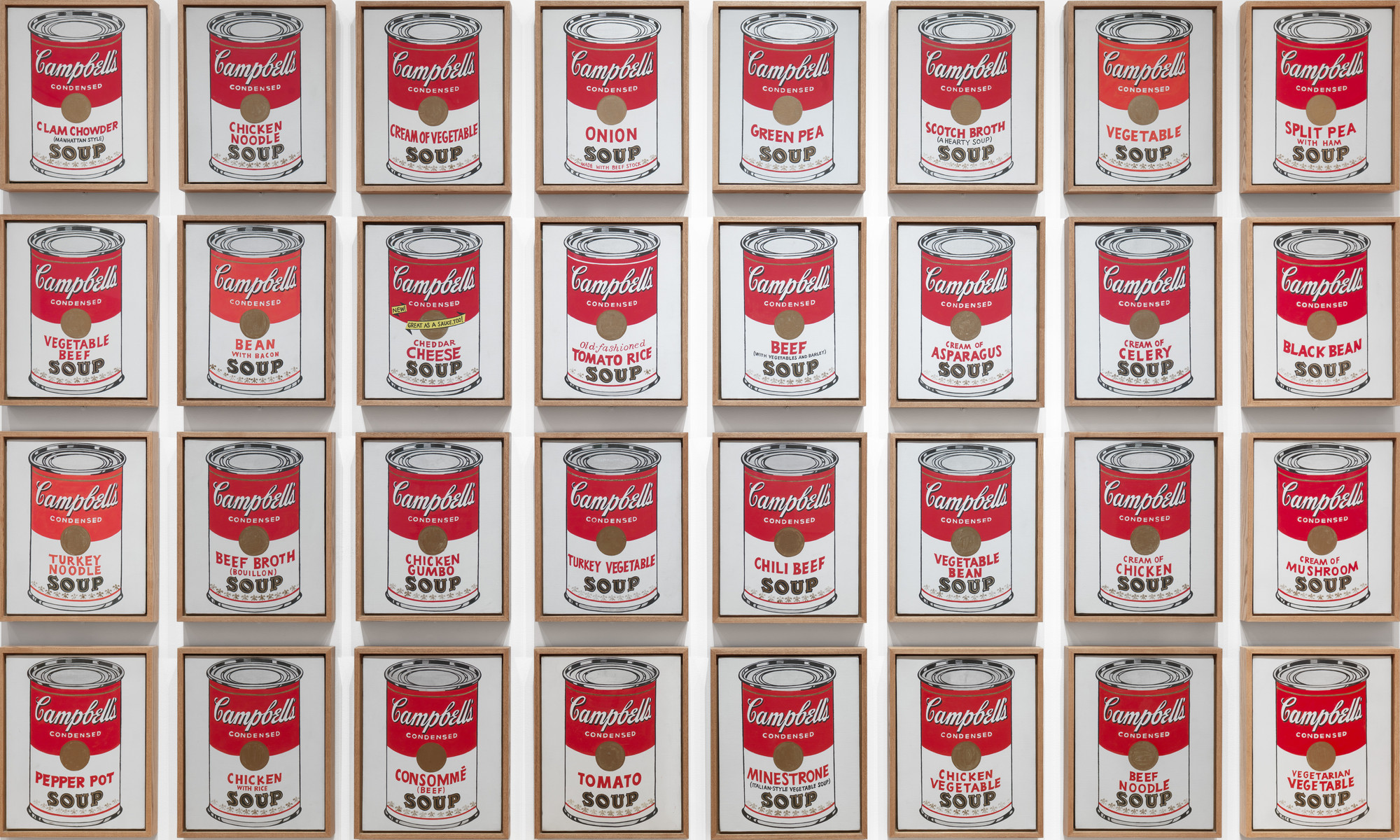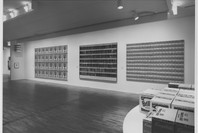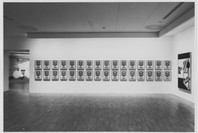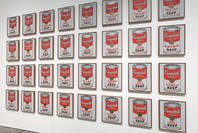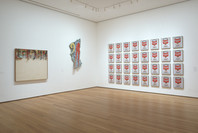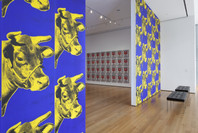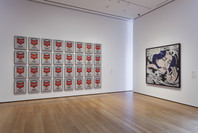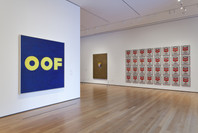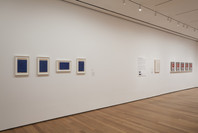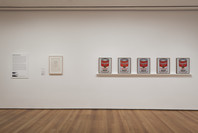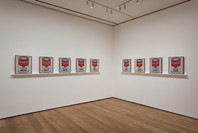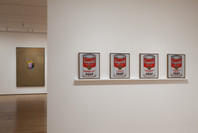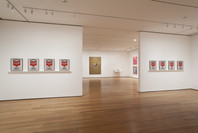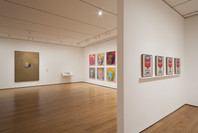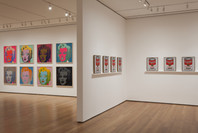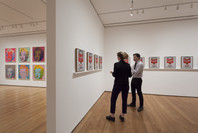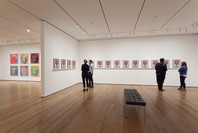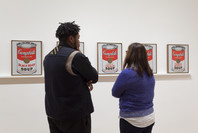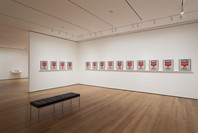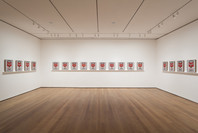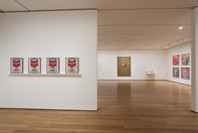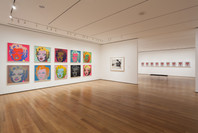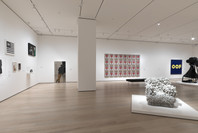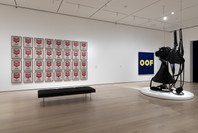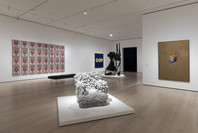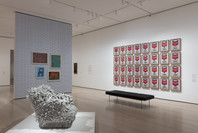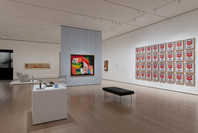When asked why he chose to paint Campbell’s soup cans, Warhol offered a deadpan reply: “I used to have the same lunch every day, for twenty years, I guess, the same thing over and over again.” That daily meal is the subject of this work consisting of thirty-two canvases—one for each of the flavors then sold by Campbell’s—using a combination of projection, tracing, painting, and stamping. Repeating the nearly identical image, the canvases at once stress the uniformity and ubiquity of the product’s packaging and subvert the idea of painting as a medium of invention and originality.
Gallery label from 2020
When asked why he chose to paint Campbell’s soup cans, Warhol offered a deadpan reply: “I used to have the same lunch every day, for twenty years, I guess, the same thing over and over again.” That daily meal is the subject of this work consisting of thirty-two canvases—one for each of the flavors then sold by Campbell’s—using a combination of projection, tracing, painting, and stamping. Repeating the nearly identical image, the canvases at once stress the uniformity and ubiquity of the product’s packaging and subvert the idea of painting as a medium of invention and originality.
Gallery label from 2019
“I don’t think art should be only for the select few,” Warhol said. “I think it should be for the mass of the American people.” Like other Pop artists, Warhol used images with wide appeal: comic strips, advertisements, photographs of rock-music icons and movie stars, and tabloid news shots. In Campbell’s Soup Cans he reproduced an object of mass consumption in the most literal sense. When he first exhibited these canvases—there are thirty-two of them, the number of soup varieties Campbell’s then sold—each one simultaneously hung from the wall, like a painting, and stood on a shelf, like groceries in a store. The artist referred to them affectionately as “portraits.”
Warhol made these paintings in a systematic multistep process. First he delineated each can with pencil on canvas. Next he painted the can and label by hand, using a light projector to superimpose the lettering directly onto the canvas, then tracing its form. Repeating the nearly identical image at the same scale, the canvases stress the uniformity and pervasiveness of the Campbell’s can, thereby challenging the prevailing idea of painting as a medium of invention and originality distinct from popular culture. The Campbell’s label, which had not changed in more than fifty years, was unremarkable and ubiquitous. Warhol later said of Campbell’s soup, “I used to drink it. I used to have the same lunch every day, for twenty years, I guess, the same thing over and over again.”
Publication excerpt from MoMA Highlights: 375 Works from The Museum of Modern Art, New York (New York: The Museum of Modern Art, 2019)
Andy Warhol famously appropriated familiar images from consumer culture and mass media, among them celebrity and tabloid news photographs, comic strips, and, in this work, the widely consumed canned soup made by the Campbell’s Soup Company. When he first exhibited Campbell’s Soup Cans in 1962, the canvases were displayed together on shelves, like products in a grocery aisle. At the time, Campbell’s sold 32 soup varieties; each one of Warhol’s 32 canvases corresponds to a different flavor. (The first flavor the company introduced, in 1897, was tomato).
Though Campbell’s Soup Cans resembles the mass-produced, printed advertisements by which Warhol was inspired, its canvases are hand-painted, and the fleur de lys pattern ringing each can’s bottom edge is hand-stamped. Warhol mimicked the repetition and uniformity of advertising by carefully reproducing the same image across each individual canvas. He varied only the label on the front of each can, distinguishing them by their variety. Warhol said of Campbell’s soup, “I used to drink it. I used to have the same lunch every day, for 20 years, I guess, the same thing over and over again.”
Towards the end of 1962, shortly after he completed Campbell’s Soup Cans, Warhol turned to the photo-silkscreen process. A printmaking technique originally invented for commercial use, it would become his signature medium and link his art making methods more closely to those of advertisements. “I don’t think art should be only for the select few,” he claimed, “I think it should be for the mass of the American people.”
